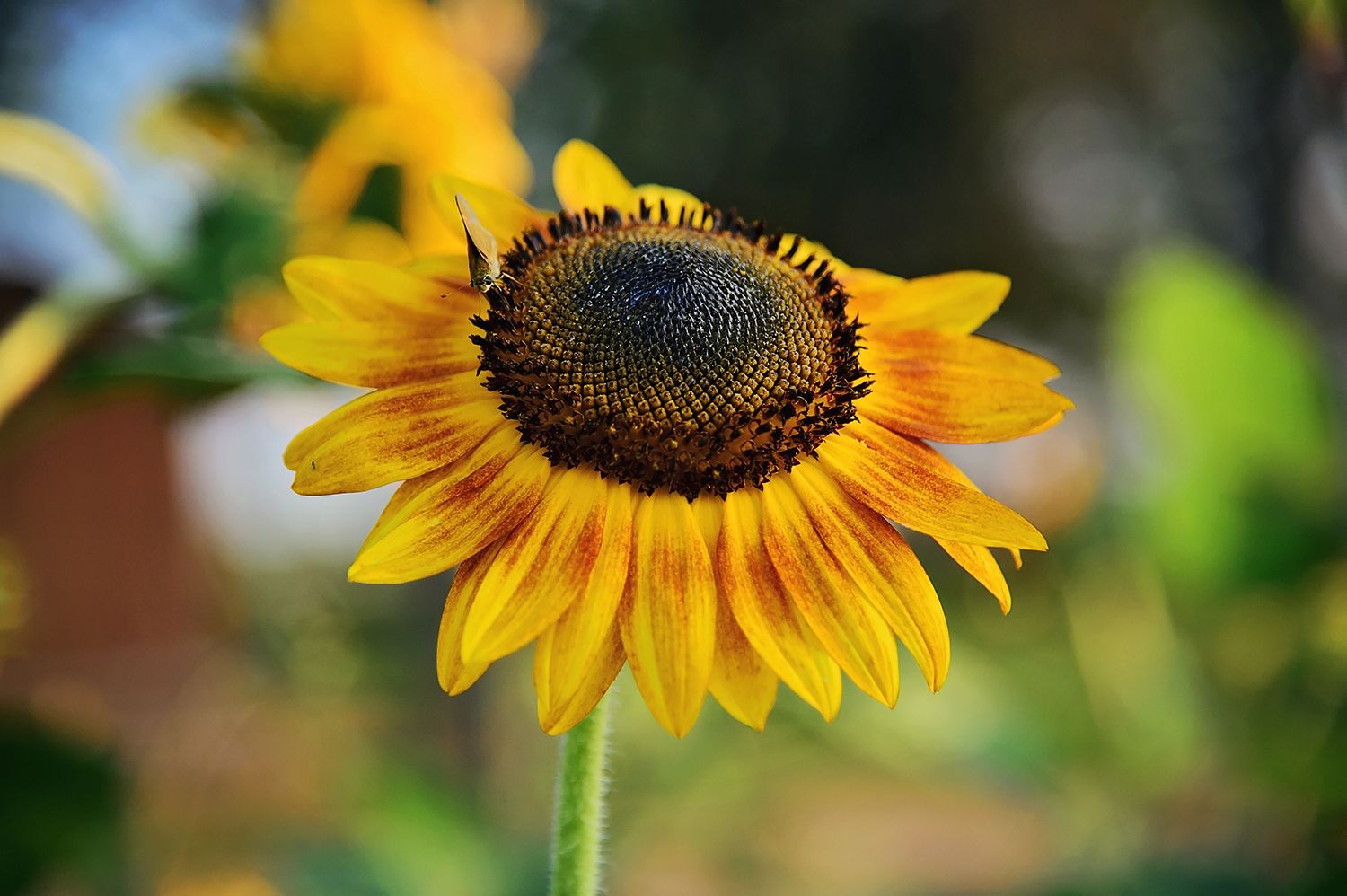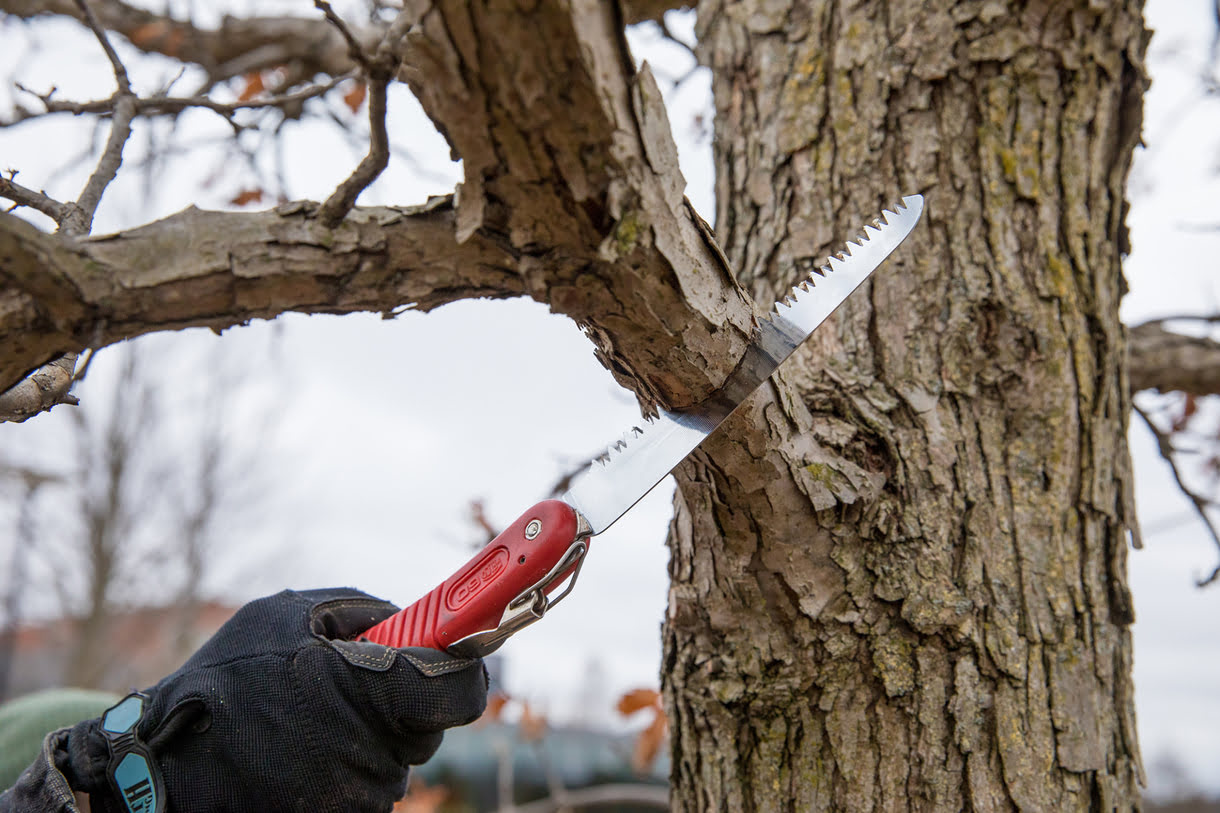Home>Gardening Techniques>Plant Care>How Do You Prune Sunflowers


Plant Care
How Do You Prune Sunflowers
Modified: January 22, 2024
Learn the proper plant care techniques for pruning sunflowers to promote healthy growth and abundant blooms. Discover expert tips and tricks for optimum results.
(Many of the links in this article redirect to a specific reviewed product. Your purchase of these products through affiliate links helps to generate commission for Chicagolandgardening.com, at no extra cost. Learn more)
Table of Contents
Introduction
Sunflowers, with their vibrant yellow petals and towering stems, are a beloved addition to any garden or landscape. These iconic flowers not only bring beauty but also serve as a source of food for birds and bees. However, to ensure healthy growth and abundant blooms, proper care is essential. One crucial aspect of sunflower care is pruning.
Pruning sunflowers involves selectively removing certain parts of the plant, such as dead or damaged leaves, to promote better growth, shape, and overall health. While it may seem intimidating, pruning sunflowers is a simple and rewarding task that any gardener, regardless of experience, can undertake. This article will guide you through the process, explaining the importance of pruning, when to prune, the tools you’ll need, a step-by-step guide, common mistakes to avoid, and the benefits of pruning sunflowers.
By understanding how and when to prune sunflowers, you can enjoy healthier plants that produce more magnificent blooms, bringing joy and beauty to your garden all season long.
Importance of Pruning Sunflowers
Pruning sunflowers is not just about creating a visually pleasing garden; it plays a vital role in the overall health and productivity of the plants. Here are several reasons why pruning sunflowers is important:
- Promotes better airflow: When sunflowers are left unpruned, dense foliage can obstruct air circulation, leading to increased humidity and the potential for fungal diseases. Pruning removes excessive foliage, allowing air to flow freely through the plant, reducing the risk of diseases.
- Enhances sunlight penetration: Sunflowers require ample sunlight to thrive. By pruning, you can remove lower leaves and branches that may block sunlight from reaching the lower parts of the plant. This allows for better sun exposure, promoting healthy growth and flowering.
- Encourages stronger stems: Pruning stimulates the growth of stronger stems in sunflowers. By removing weaker, thin branches, the plant redirects its energy to develop thicker, sturdier stems that can support the weight of the flower heads without bending or breaking.
- Prevents self-seeding: Sunflowers have a reputation for self-seeding and spreading rapidly. Pruning regularly can help control the spread by removing spent flowers before they develop seeds. This keeps the plant from diverting energy into producing seeds, allowing it to focus on producing more blooms instead.
- Shapes the plant: Pruning sunflowers allows you to shape the plant according to your desired aesthetic. By selectively removing certain branches or stems, you can influence the overall form of the plant, creating a neater and more visually appealing look in your garden.
By understanding the importance of pruning sunflowers, you can take the necessary steps to ensure your plants remain healthy, vibrant, and productive throughout the growing season.
When to Prune Sunflowers
The timing of when to prune sunflowers is crucial to ensure optimal results. Here are some guidelines to follow:
Early Growth Stage: It is generally recommended to start pruning sunflowers when they reach a height of around 12-18 inches (30-45 cm). At this stage, the plants are still young, and pruning helps promote a bushier and more compact growth habit.
During Flowering: While it is best to avoid heavy pruning during the peak flowering period, you can still remove any dead or faded flowers, known as deadheading, to encourage continuous blooming. Removing spent flowers also prevents the plant from diverting energy into seed production.
After Flowering: Once the sunflower has finished blooming and the flower head starts to wilt and dry out, you can prune it down to the stem. This process, known as deadheading, prevents self-seeding and encourages the plant to focus on growth and producing new flower heads.
End of Season: Towards the end of the growing season when the sunflower has completed its life cycle, you can prune the entire plant down to the ground. This helps manage plant debris and prevents disease or pests from overwintering in the garden.
It is important to note that individual sunflower varieties may have specific pruning requirements, so it’s beneficial to consult the plant’s care instructions or a gardening expert for more precise guidance.
By pruning sunflowers at the appropriate times, you can ensure healthier growth, prolonged blooms, and a more aesthetically pleasing garden.
Tools Needed for Pruning
Pruning sunflowers requires the use of the right tools to ensure clean cuts and prevent damage to the plant. Here are some essential tools you’ll need for pruning sunflowers:
- Pruning shears: Pruning shears, also known as hand pruners or secateurs, are a must-have tool for pruning sunflowers. Choose a pair with sharp blades and a comfortable grip to make clean cuts without causing strain to your hand.
- Loppers: For larger or thicker branches, loppers come in handy. These long-handled pruning tools have a cutting mechanism resembling that of pruning shears but with longer blades and greater cutting power.
- Pruning saw: Sometimes, sunflower stems can be quite thick, requiring a pruning saw to make clean cuts. Opt for a compact and sharp pruning saw that can easily fit in your gardening tool kit.
- Garden gloves: It’s always a good idea to protect your hands while pruning, especially when dealing with thorny sunflowers or handling potentially allergenic plant sap. Choose durable, flexible, and comfortable gardening gloves to keep your hands safe.
- Disinfectant: To prevent the spread of diseases, it’s important to disinfect your pruning tools between plants. Keep a bottle of disinfectant spray or rubbing alcohol on hand to sanitize your tools before and after each use.
These tools are readily available at gardening centers or online stores. Investing in good quality tools will ensure durability and ease in pruning your sunflowers.
Remember, always follow safety precautions while using gardening tools, wear protective gear, and keep your tools sharp and clean for efficient and effective pruning.
Step-by-Step Guide to Pruning Sunflowers
Pruning sunflowers may seem daunting at first, but with this step-by-step guide, you’ll be able to confidently prune your plants and promote their health and beauty:
- Inspect the plant: Before you begin pruning, take a close look at your sunflower plant. Identify any dead, damaged, or diseased leaves, branches, or flower heads that need to be removed.
- Prepare your tools: Gather the necessary pruning tools, such as pruning shears or loppers, disinfectant, and garden gloves.
- Sanitize your tools: Before pruning, disinfect your tools to prevent the spread of diseases. Spray the blades of your pruning shears or wipe them with a cloth soaked in rubbing alcohol.
- Start with deadheading: If your sunflower is in bloom, begin by removing any spent or faded flowers. Cut the stem just above a set of leaves or leaf node.
- Remove dead or damaged leaves: Identify any yellowed or brown leaves that may be dead or dying. Use your pruning shears to cut them off at the base of the stem.
- Trim broken or diseased branches: Inspect the branches for any signs of damage or disease. Prune off any branches that are broken, diseased, or infested with pests. Make clean cuts just above a healthy bud or side shoot.
- Thin out the plant: If your sunflower has an excessive number of branches or stems, selectively remove some to allow for better airflow and sunlight penetration. This will help prevent diseases and promote healthy growth.
- Shape the plant: If desired, shape your sunflower by selectively pruning certain branches or stems to achieve your desired aesthetic. Remember to make clean cuts just above a bud or side shoot.
- Clean up and dispose of plant debris: After pruning, collect and discard any plant debris, including dead flowers, leaves, and branches. This will help prevent the spread of diseases and maintain a tidy garden.
By following these steps, you can effectively prune your sunflowers and promote their overall health, growth, and beauty. Remember to take your time, be mindful of the plant’s needs, and enjoy the process of nurturing your sunflowers.
Common Mistakes to Avoid
While pruning sunflowers is a beneficial practice, it’s important to be aware of common mistakes that can hinder the plants’ growth and vigor. By avoiding these pitfalls, you can ensure the best results from your pruning efforts:
- Pruning at the wrong time: Timing is crucial when pruning sunflowers. Avoid heavy pruning during the peak flowering period, as it can reduce the number of blooms. Instead, focus on deadheading and light pruning to maintain plant health and continuous blooming.
- Removing too much foliage: Over-pruning can harm your sunflowers. Avoid removing excessive foliage as it can hinder the plant’s ability to photosynthesize and produce energy. Prune selectively, focusing on dead or damaged leaves and lateral branches to maintain a balance.
- Improper pruning cuts: Incorrect cutting techniques can damage the plant and impair its healing ability. Always make clean cuts just above a bud or side shoot, using sharp and sanitized tools. Avoid leaving stubs or cutting too close to the main stem.
- Skipping disinfection: Failing to sanitize your pruning tools can lead to the spread of diseases between plants. Disinfect your tools before and after each use to minimize the risk of transmission and protect the health of your sunflowers.
- Pruning too late in the season: Pruning sunflowers too late in the season can disrupt their natural life cycle and reduce their ability to store energy for the following year. Avoid pruning when the plant is close to the end of its growing season.
- Not following specific variety guidelines: Different sunflower varieties may have specific pruning requirements. Some varieties may require more or less pruning, depending on their growth habits. Always refer to the plant care instructions or consult a gardening expert for variety-specific guidelines.
Avoiding these common mistakes will help ensure that your sunflowers remain healthy, vibrant, and productive. Remember to be patient, observant, and follow proper pruning techniques to give your plants the best care possible.
Benefits of Pruning Sunflowers
Pruning sunflowers offers several benefits that contribute to the overall health and beauty of the plants. Here are some key advantages of regularly pruning your sunflowers:
- Improved air circulation: Pruning helps create better airflow around the sunflower plant, reducing humidity and the risk of fungal diseases. This promotes healthier and stronger growth.
- Enhanced sunlight penetration: By selectively removing leaves and branches, sunlight can reach lower parts of the plant, stimulating growth and encouraging more even flowering.
- Stronger stems: Pruning sunflowers encourages the development of sturdier stems capable of supporting the weight of large flower heads. This helps prevent them from bending or breaking, especially in windy conditions.
- Extended blooming period: Deadheading, the removal of spent flowers, promotes continuous blooming and prolongs the overall flowering period of sunflowers. This results in more vibrant displays in your garden.
- Controlled self-seeding: Pruning sunflowers before they develop seeds helps prevent excessive self-seeding, giving you more control over where the plants grow and reducing potential overcrowding in your garden.
- Improved aesthetics: Pruning allows you to shape the sunflower plant according to your preference, creating a more visually pleasing and well-maintained garden or landscape.
By taking the time to prune your sunflowers properly, you can enjoy these benefits and help your plants thrive. Remember to prune at the right time and use proper techniques to maximize the positive impact of pruning.
It’s important to note that while pruning offers many advantages, it should be done in moderation and with careful consideration of the specific needs of your sunflower variety. Always consult variety-specific guidelines or seek advice from a local gardening expert for optimal results.
Conclusion
Pruning sunflowers is a fundamental practice that can greatly benefit their growth, health, and overall appearance. By selectively removing dead or damaged leaves, spent flowers, and excessive foliage, you can improve airflow, promote stronger stems, extend the blooming period, and shape the plant to your liking.
It’s important to follow proper pruning techniques, such as making clean cuts just above buds or side shoots and sanitizing your tools to prevent the spread of diseases. Additionally, timing is crucial; prune your sunflowers during their early growth stage, after flowering, and towards the end of the season to achieve the best results.
Remember to avoid common mistakes like over-pruning, improper cutting techniques, and neglecting disinfection. Each sunflower variety may have specific pruning guidelines, so be sure to refer to variety-specific instructions or seek guidance from gardening experts.
By investing time and effort into pruning your sunflowers, you can create a healthier and more visually appealing garden. Enjoy the process, observe your plants carefully, and adapt your pruning techniques based on their specific needs. With proper care, you’ll be rewarded with vibrant, beautiful sunflowers that bring joy and beauty to your outdoor space.










